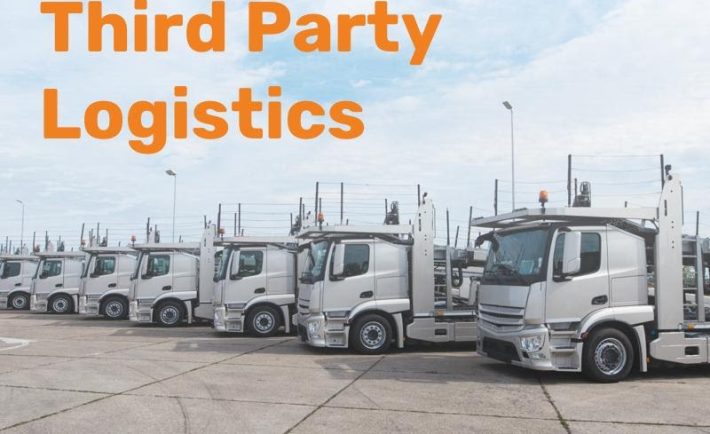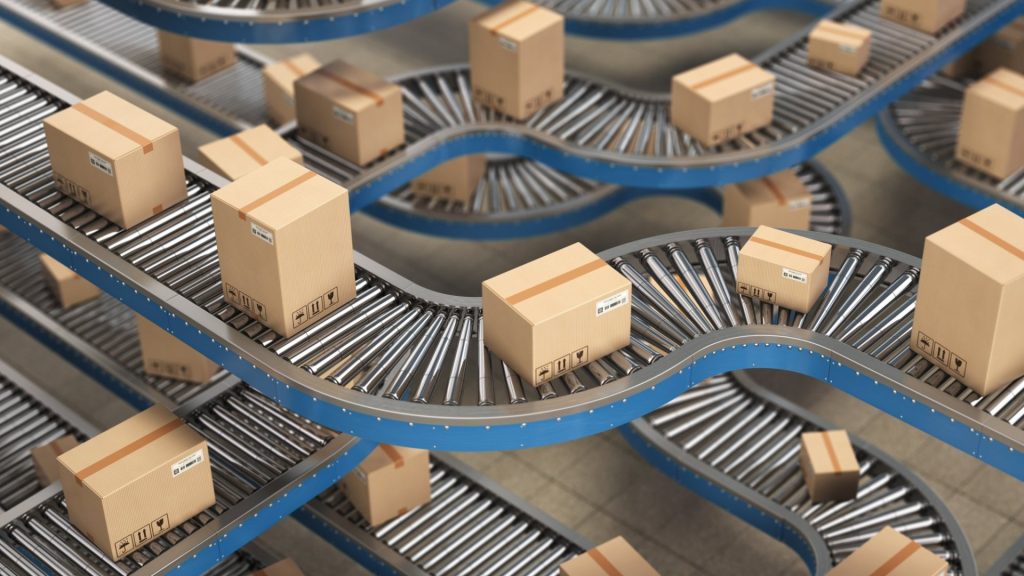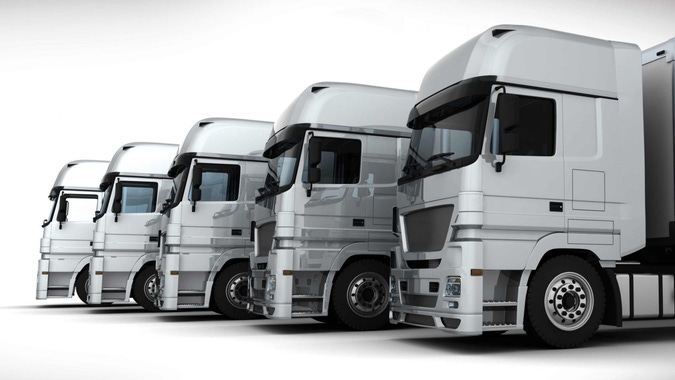
A large part of the day-to-day operations of a business involves fulfilling customer orders. The order fulfillment process starts when the customer places an order and ends when it arrives at their doorstep.
What appears to be a simple process can get quite complex depending on where your company’s inventory is stored, where the customer is located, order size, and delivery schedule. When you factor in the potential profit, things get even more complicated.
When a business goes beyond its ability to manage order fulfillment in-house, it may be time to consider certain outsourcing functions to third-party logistics companies (so-called 3PL freight transportation management services).
What is Third-Party Logistics (3PL)?
Third-party logistics involves three parties: the business, the logistics provider, and the carrier. Simply put, a third-party logistics provider offers logistics services to manage certain aspects of a company’s transportation operations. 3PL supply chain management is renowned for its expertise in logistics and can help companies fulfill orders better to keep their customers happy.
In most cases, the 3PL is integrated into the storage and transportation of a company’s inventory. Instead of storing, packaging, and shipping orders themselves, companies hire 3PLs to manage the entire process. 3PL owns or leases its warehouse and transportation assets, using them to fulfill customer orders from a remote location. By outsourcing fulfillment logistics to a third-party supplier, companies can focus more on growing and growing their business.
The third-party supply chain model was developed in the 1970s when intermodal marketing companies began receiving packaged shipments from shippers and ferrying those shipments onto railways for delivery. This process has been refined and modernized with transportation software development, which simplifies and streamlines the entire process for 3PLs and the companies that hire them. 3PLs are used by businesses of all sizes, from Fortune 500 companies to startups.
Types of 3PLs

Although many focus on specific supply chain solutions, a third-party logistics provider can offer a wide range of services. For a business, this can mean hiring multiple 3PLs to handle various aspects of your supply chain – this is when hiring a 4PL can come in handy.
Here’s a quick overview of the different types of 3PL providers you may come across:
Shipping
This type of 3PL specializes in transporting inventory between locations, for example, transportation. When choosing a 3PL transportation provider, you need to consider various factors such as the company’s location, the location of your customers, delivery times, shipping methods, service options, and prices and discounts.
Warehousing / Distribution
The most common type of 3PL is warehouse and distribution. These suppliers are responsible for storing, shipping, and returning your orders. When considering 3PL warehousing, you need to consider the number of locations and their geographic location, the storage pricing model, agreed with shipping rates, shipping insurance, daily fulfillment restrictions, and management tools.
Inventory Management
It is more than just storing your company’s products. It also includes integrated technology that syncs your inventory with your online store in real-time, so you can track inventory and forecast demand to avoid sales.
Financial Services
Once your company grows past eight- or nine-figure annual revenues, you may want to leverage financial 3PL to help you optimize your operations for the industry and assess current trends. These 3PLs offer cargo auditing, cost accounting, accounting, tracking, tracking, and inventory management.
What are the Core Services 3PLs Provide?

The 3PL can scale and customize its services to suit the customer’s specific needs, and the customer still retains some degree of control when it comes to managing delivery operations. Before signing the contract, you can specify what services you want 3PL to provide and what services you will keep within the company. As your business grows and changes, your 3PL provider can take on an increasingly important role, adding value-added services or expanding operations in general.
3PL Warehouse Management
Renting a 3PL will save you the hassle of looking for storage space for all of your inventory. Many 3PLs offer shared storage, managing order fulfillment for multiple customers from a single physical location to maximize efficiency and reduce costs.
Freight forwarding
After the products are assembled and packaged, the 3PL sends them to the shipping company for delivery. Different 3PLs work with other carriers and a good 3PL will choose the one that offers the best combination of price and delivery speed. Some 3PLs work with local carriers for less than LTL for local orders.
Expedited shipping
Working with a 3PL allows your business to offer expedited shipping options to your customers as fulfillment centers ship orders daily – far more often than you would be able to provide if you were processing orders internally. 3PLs often have discounts negotiated with carriers such as FedEx, DHL, USPS, and others to offer faster shipping speeds at a reasonable cost.
Tracking shipments
In addition to handling the shipping process, 3PL will also manage the tracking and tracing process. Customers will receive shipping information to easily track their orders throughout the entire order fulfillment process.
Reverse logistics (returns)
3PLs not only offer shipping services but can also provide reverse logistics to handle returns. The 3PL may offer return labels to customers in order to transfer the item to the carrier for return to a fulfillment center.
Again, when you sign a contract with a 3PL company, you can customize their services to suit your business needs. An experienced 3PL provider will be able to take over the logistics of the entire supply chain from the moment your customer ships their order to the moment they arrive at their doorstep.
Best Practices for Managing a 3PL

The hallmark of any good businessman is foresight. From the moment you start your business, you should know where you want to go and how you want to get there. If you are looking to expand your offerings nationwide or internationally, 3PL can help you achieve this through stock distribution services. For example, some 3PLs offer the option to use two-day or overnight shipping to help e-commerce businesses keep up with Amazon and other giants.
Hiring a 3PL supplier to manage your supply chain logistics is a smart move if any or all of the above attributes come into play. However, before you start buying 3PLs, you should consider whether this is enough. You might consider taking a step further and hiring a third-party logistics provider – keep reading to find out more.
Clearly State Your Requirement
The advantage of using a 3PL is that you can use your existing partner settings for storing, packing, picking, and shipping orders. Evaluate how efficient the process is and whether they are prepared to handle the increase in inventory as your business grows.
Ask the following questions:
- How many warehouses do they have?
- Do their locations match your high-traffic areas?
- Have they worked with companies in your industry? What vertical do they specialize in?
- How many orders do they ship each month (in the following categories: B2C, B2B, domestic and international)?
- What is their maximum capacity?
- Has their power increased over time? Is its growth in line with your own history and forecasts?
- Do they do reverse logistics?
- How do they fulfill orders the next day?
- How do they deal with unexpected spikes in order volume?
Choose a 3PL with experience in delivering similar products and in the same scope as your e-commerce company. Storing and transporting flat-packed items such as clothing differs significantly from transporting household appliances, and having 50 orders per day differs significantly from shipping 50,000 orders per day.
Define Contract Terms
Before starting to work with a new 3PL provider, carefully study the details of the contract. If you ask the following questions in advance, you will not be able to agree with an unreliable logistics service provider:
- How do they compensate for delays?
- Do they have a binding nondisclosure agreement?
- Do they have strong customer reviews?
- Do they have at least two years of financial stability experience, and are they willing to share financial statements with you?
Decide if you prefer a refund or a credit if deliveries are not delivered on time. Ensure you know if you will receive a loan for broken or lost items – review the offered service level guarantees to assess your liability.
Also, consider whether you want your parcels to be fully insured during storage and delivery, and return. Be careful when negotiating. For example, you may only want to insure items under $ 100 and up. Understand if you are getting insurance or just the carrier’s liability.
Measure Effectiveness and Track KPIs

Despite the rapid development of technology and automation, warehouse management is one of the most challenging and complex tasks in logistics. It is impossible to assert with certainty whether a warehouse is operating efficiently without monitoring its various performance indicators.
Key performance indicators come to the rescue – warehouse logistics KPIs.
On-time shipping
OTS is one of the most important KPIs in warehouse logistics. It shows the percentage of vehicles (hereinafter PV) shipped on time for the billing period.
The shipment is considered timely if the warehouse employees have kept it within a certain time window. It varies from company to company, most often from one (for example, for cross-docking) to six hours after the planned arrival time. Sometimes the standards may differ depending on the type of transport – for example, 4 hours for a truck and 6 hours for a carriage. During this time, you need to have time to put the transport at the gate, check the cargo, load the vehicle, draw up documents and send the cargo on the flight. Also, the standards differ from the type of loading – pallet loading or box-by-box.
Vehicles that arrived at the wrong time for shipment (for example, through the fault of a driver or a transport company) do not participate in the KPI calculation since such delays are not related to quality warehouse work. Latecomers are dispatched to the nearest free window on a first-come, first-served basis.
The OTS target should be at a high level – at least 95%. Many companies set it at 98% or more.
On-time inbound
OTI is calculated in the same way as OTS: it is the percentage of vehicles that the warehouse managed to receive within a specific time limit. But this KPI of warehouse logistics has its own nuances.
First, the time window for receiving is usually longer than for shipping – for example, it can be up to 12 hours. This is since the acceptance process may contain additional operations:
- measurement of weight and dimension parameters of each article;
- piece-by-piece recount of the included goods;
- verification of conformity of labeling and accompanying documents;
- veterinary control (in the case of food supply) and so on.
Also, forecasting incoming deliveries is often complicated by external factors: a large flow of imported goods, the difficulty of predicting the height of pallets, the unpredictable work of customs, and so on.
Secondly, there is a limit on the number of cars that arrive for acceptance at a time in some warehouses. In particular, if seven trucks arrived at the warehouse with a limit of 5, the remaining two are not considered when calculating the KPI. The limitation depends on the number of gates and the expedition zone or buffer zone the products are accepted.
In addition, the calculation does not include vehicles that:
- arrived at the wrong time: the warehouse gives the cars a certain stock – for example, if the planned arrival time is 13:00, and the stock is 60 minutes, then a car that arrived at 13:55 is considered to have arrived on time, and at 14:05 – late;
- brought a cargo that does not meet the requirements of the warehouse (goods are filled up, high humidity, incorrect temperature conditions, etc.);
- do not have the required set of documents with them;
- Contain a large number of mixed pallets, in which each position is accepted by the piece.
The OTI target should be at about the same level as the OTS – that is, at least 95%.
Picking accuracy
It reflects how accurately the warehouse prepares orders for shipment. It shows the percentage of correctly collected orders for which the company has not received claims confirmed by the warehouse. For each share received, the warehouse conducts an investigation. If the error occurred through no fault of its own, it provides a refutation of the claim, for example, in the form of recording from surveillance cameras. Such claims are not included in the KPI calculation.
The nuance of assembly accuracy is that it is necessary to calculate this KPI of warehouse logistics with a delay of a month (if we talk about regional shipments). By the end of the month, not all orders have time to reach the recipient. For example, in early September, the company calculates build accuracy for July, not August.
Another nuance lies in the details of the calculation. You can take both an order and a line, line, item, or article in the order and a box or piece as a basis for calculation. The assembly accuracy can be calculated at the line level. However, depending on the type of product, either an article or a batch can be taken as a line. For example, the SKU is accepted for cosmetics and line care products in the FMCG sector and the batch for OTC medicines.
The target for assembly accuracy should be high enough – not less than 98%.
Accuracy of preparation of shipping documents
There is no trick to calculating this KPI. The accuracy of the preparation of shipping documents reflects the percentage of orders for which the warehouse has correctly issued the accompanying documentation. The target should be high – at least 99%.
How to improve the KPI of warehouse logistics?

Obviously, the KPI of warehouse logistics needs not only to be monitored, but also to be improved in every possible way. Each indicator has its own approach, but there are several universal recommendations.
First of all, you need to agree on the KPI with the warehouse provider and include the indicators in the contract so that there are no misunderstandings. Some companies also practice the “bonus-malus” system: they reward contractors who help maintain KPIs at or above the standard and fine those who fail to meet the quality of services. For example, if the warehouse lagged behind the KPI by 0.5%, the monthly payment is reduced by the same amount – and vice versa.
Problems with shipping and receiving are most often related to forecasting. If too many cars are on the plan, the warehouse will not have time to process them. For a competent forecast, you need to take into account many variables: the number of gates, the capacity of the warehouse, the number of employees, the average loading time of one machine, and so on.
In terms of build accuracy, pay attention to how the build area is organized. The personnel must consider the volumetric and weight characteristics of the goods, and the picker route must be optimal so as not to spend a lot of time assembling the order. For example, it is more logical to place heavyweights at the beginning of the assembly area and light weights at the end.
The more stringent the requirements for assembly quality and the more types of assembly are used in the warehouse for different customers, the more often warehouse employees make mistakes. If one of the areas causes an exceptionally high number of complaints, controllers should be appointed to it. The assembly time will increase, but at the same time, the accuracy will increase.
Finally, to improve the quality of document preparation, automate the process as much as possible, but watch out for software glitches. The documents should be transferred in advance, and the transfer process itself should be simplified as much as possible.
Have Regular Check-Ins
When dealing with the new 3PL, it is very important that everything switches smoothly. Monitor your customer support channels and social media for customer complaints related to shipping. Also find out if your 3PL options offer some form of reporting that will help you track things like on-time delivery, order and delivery accuracy, and shipping-related damage.
Set expectations for this communication. How they report the following:
- New orders
- Delivery notifications
- Return
- Inventory
- Incoming purchase orders
- Receiving stocks
- Adjustment notifications
Cross-Train Employees

One of the easiest ways to determine if a 3PL provider is compatible with your e-commerce business is to look at their customers. If they have experience with similar clients in your industry, the chances are good that they will be able to meet your needs.
You also want to make sure that your 3PL provider offers integration with your technology. If you are using a Shopify store, your 3PL provider’s IT tools must be compatible with the Shopify platform. WSI is one example of a vendor that is compatible with e-commerce stores of all sizes. They have the IT infrastructure to integrate with a wide range of retail platforms including:
- Shopify
- Amazon
- Target
- Walmart
Ideally, your 3PL logistics management provider should have experience with e-commerce businesses the same size as you. If you are a small business, look for a supplier that is experienced in helping small and medium-sized brands expand and market. If you are a reputable retail brand, your 3PL provider should be familiar with how to help similar businesses work with large retailers.
In addition, it is imperative to arrange training for the 3PL management team at the outset to ensure that all employees are thoroughly familiar with your brand concept and tone of voice.
Conclusion
It takes a lot to build a successful e-commerce company: you need a great product, a strong marketing campaign, and you need to know how to get your products to customers as quickly as possible.
But as your company continues to grow, it will become more and more difficult for you to maintain your commitment internally. At some point, you will need to expand your logistics operations – either to meet growing demand because you want to expand your customer base or both.
One of the most effective ways to do this is to outsource the supply chain to a 3PL transportation management provider. This can save you time and money and free up internal resources that can be used for other important operations (such as sales, marketing, and product development).
This article was prepared with the help of Ardas team.




